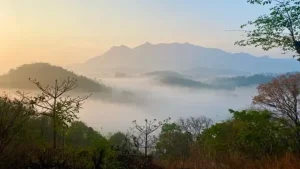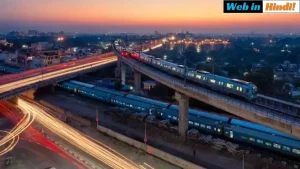As someone who has grown up in India, I have always been fascinated by the diversity and rich cultural heritage of this vast and sprawling nation. One of the most striking features of India’s governance structure is the presence of multiple states with distinct identities, languages, and traditions.
In this article, I will delve into the topic of how many states exist in India, from their historical evolution to their present-day formation and unique features. My aim is to provide you with a comprehensive overview of Indian states, their significance, and their impact on India’s diverse identity.
Key Takeaways:
- India is currently comprised of 28 states and 8 union territories.
- The formation of Indian states has evolved over time, with significant changes taking place after independence and the enactment of Article 370.
- Each Indian state has its own capital, legislature, and governance structure
- Indian states vary widely in terms of language, culture, geography, and economic development.
- The existence of states in India contributes to the collective national identity and cultural fabric of the country.

Current Number of States in India
As of 2023, the total number of states in India is 28, along with 8 Union territories. Here is a comprehensive list of all the states in India:
| State Name | Capital |
|---|---|
| Andhra Pradesh | Amaravati |
| Arunachal Pradesh | Itanagar |
| Assam | Dispur |
| Bihar | Patna |
| Chhattisgarh | Raipur |
| Goa | Panaji |
| Gujarat | Gandhinagar |
| Haryana | Chandigarh |
| Himachal Pradesh | Shimla |
| Jharkhand | Ranchi |
| Karnataka | Bengaluru |
| Kerala | Thiruvananthapuram |
| Madhya Pradesh | Bhopal |
| Maharashtra | Mumbai |
| Manipur | Imphal |
| Meghalaya | Shillong |
| Mizoram | Aizawl |
| Nagaland | Kohima |
| Odisha | Bhubaneswar |
| Punjab | Chandigarh |
| Rajasthan | Jaipur |
| Sikkim | Gangtok |
| Tamil Nadu | Chennai |
| Telangana | Hyderabad |
| Tripura | Agartala |
| Uttar Pradesh | Lucknow |
| Uttarakhand | Dehradun |
| West Bengal | Kolkata |
Remember, India’s statehood offers a diverse range of cultural, historical, and geographical features. Each state contributes to the collective identity of the nation, making India a unique and beautiful place to explore.
Evolution of State Formation
India has undergone significant changes in its statehood since independence. Initially, there were only 14 states and six union territories, but the country now comprises 28 states and eight union territories. The formation of states took place through various mechanisms, including linguistic, cultural, and administrative reasons.
Timeline of State Formation
| Year | New State Formed |
|---|---|
| 1950 | Andhra Pradesh, Bihar, Bombay State, Hyderabad State, Jammu and Kashmir, Madhya Pradesh, Madras State, Mysore, Odisha, Punjab, Rajasthan, Uttar Pradesh |
| 1960 | Gujarat, Maharashtra, Nagaland, Punjab (split) |
| 1963 | Nagaland (statehood granted) |
| 1966 | Haryana, Punjab (split) |
| 1971 | Himachal Pradesh, Meghalaya |
| 1972 | Tripura |
| 1975 | Sikkim |
| 1987 | Goa |
| 2000 | Chhattisgarh, Jharkhand, Uttarakhand |
| 2014 | Telangana |
The demand for new states has also been driven by local communities that feel underrepresented or discriminated against, leading to the division of existing states. The formation of new states has often been a highly contentious issue where political and social groups have disagreed.
Despite such disagreements, India’s statehood continues to evolve, with new challenges and solutions emerging. Understanding the historical context of statehood is vital to comprehend the current political and social landscape of the country.
Present State Configuration
Currently, India has 28 states and 8 union territories. Each state has its own unique culture, language, and administrative capital. The states are distributed across the country based on different criteria such as geography, history, and demography.
Some of the larger states in India include Uttar Pradesh, Maharashtra, and Bihar, while smaller states like Sikkim and Goa have significantly lower populations. The northern and central regions of India have a higher number of states than the southern and eastern parts of the country.
| State Name | Capital |
|---|---|
| Andhra Pradesh | Amaravati (de facto) |
| Arunachal Pradesh | Itanagar |
| Assam | Dispur |
| Bihar | Patna |
| Chhattisgarh | Raipur |
| Goa | Panaji |
| Gujarat | Gandhinagar |
| Haryana | Chandigarh |
| Himachal Pradesh | Shimla |
| Jharkhand | Ranchi |
| Karnataka | Bengaluru |
| Kerala | Thiruvananthapuram |
| Madhya Pradesh | Bhopal |
| Maharashtra | Mumbai |
| Manipur | Imphal |
| Meghalaya | Shillong |
| Mizoram | Aizawl |
| Nagaland | Kohima |
| Odisha | Bhubaneswar |
| Punjab | Chandigarh |
| Rajasthan | Jaipur |
| Sikkim | Gangtok |
| Tamil Nadu | Chennai |
| Telangana | Hyderabad (de jure), Amravati (de facto) |
| Tripura | Agartala |
| Uttar Pradesh | Lucknow |
| Uttarakhand | Dehradun |
| West Bengal | Kolkata |
Understanding the distribution and configuration of states in India can offer critical insights into the nation’s governance, diversity, and unique identity.
Top 20 Developed Cities in India
Top 20 Educated State in India
State Capitals
India is home to 28 states, each having its own unique identity and administrative center. Here is a comprehensive list of state capitals in India:
| State | Capital |
|---|---|
| Andhra Pradesh | Amaravati (de facto) Hyderabad (de jure) |
| Arunachal Pradesh | Itanagar |
| Assam | Dispur |
| Bihar | Patna |
| Chhattisgarh | Raipur |
| Goa | Panaji |
| Gujarat | Gandhinagar |
| Haryana | Chandigarh |
| Himachal Pradesh | Shimla |
| Jharkhand | Ranchi |
| Karnataka | Bengaluru |
| Kerala | Thiruvananthapuram |
| Madhya Pradesh | Bhopal |
| Maharashtra | Mumbai |
| Manipur | Imphal |
| Meghalaya | Shillong |
| Mizoram | Aizawl |
| Nagaland | Kohima |
| Odisha | Bhubaneswar |
| Punjab | Chandigarh |
| Rajasthan | Jaipur |
| Sikkim | Gangtok |
| Tamil Nadu | Chennai |
| Telangana | Hyderabad (de jure) Hyderabad (de facto) |
| Tripura | Agartala |
| Uttar Pradesh | Lucknow |
| Uttarakhand | Dehradun |
| West Bengal | Kolkata |
Visiting these state capitals gives you an insight into the culture, traditions, and way of life of the local people. For instance, Chennai, the capital of Tamil Nadu, is known for its beautiful beaches, elaborate temples, and spicy cuisine. Kolkata, the capital of West Bengal, is a hub of literature, history, and art, with a rich colonial heritage.
Legislative Councils in States
Legislative councils, also known as Vidhan Parishads, are the upper house of the state legislatures in India and serve as a representative body of the residents of the state.
Currently, only seven Indian states have a legislative council: Bihar, Karnataka, Maharashtra, Uttar Pradesh, Andhra Pradesh, Telangana, and Jammu and Kashmir. Both Andhra Pradesh and Telangana have a common legislative council, while Jammu and Kashmir’s legislative council was dissolved after the abrogation of Article 370.
The creation of a legislative council is determined by the state’s legislative assembly with the approval of the Parliament of India. Members of the legislative council are elected by various local authorities and the governor of the state appoints some members.
| States with Legislative Council | Date of Formation |
|---|---|
| Bihar | 1951 |
| Karnataka | 1956 |
| Maharashtra | 1962 |
| Uttar Pradesh | 1993 |
| Andhra Pradesh/Telangana | 2007 |
| Jammu and Kashmir | 1957 |
The legislative council has several functions in the state’s governance, including passing laws, scrutinizing and providing feedback on the state budget, and serving as a forum for discussing issues and challenges facing the state.
While the formation of a legislative council may be beneficial for some states, there is a debate over whether it is necessary for all states, given the cost and potential redundancy with the lower house of the state legislature.
India’s Statehood Post-Independence
India gained independence from British rule on August 15, 1947, with a total of 18 states. Over time, the number of states increased due to political and demographic reasons.
| Year | Number of States |
|---|---|
| 1950 | 28 |
| 1956 | 14 |
| 1960 | 16 |
| 1961 | 17 |
| 2000 | 28 |
| 2014 | 29 |
| 2019 | 28 |
The total number of states in India at present is 28, as of 2023. The names of these states are Andhra Pradesh, Arunachal Pradesh, Assam, Bihar, Chhattisgarh, Goa, Gujarat, Haryana, Himachal Pradesh, Jharkhand, Karnataka, Kerala, Madhya Pradesh, Maharashtra, Manipur, Meghalaya, Mizoram, Nagaland, Odisha, Punjab, Rajasthan, Sikkim, Tamil Nadu, Telangana, Tripura, Uttar Pradesh, Uttarakhand, and West Bengal.
Furthermore, the creation of new states and the alteration of state borders remain ongoing processes in India. However, these changes occur through the Constitutional Amendment process, requiring the approval of both the Parliament and the affected state’s Legislature.
Union Territories in India
Union Territories in India are regions that are under direct control of the federal government, rather than separate state governments. Unlike states, their governance and administration are overseen by the President through an appointed Lieutenant Governor.
As of 2023, India has 8 Union Territories:
| Name of Union Territory | Capital |
|---|---|
| Andaman and Nicobar Islands | Port Blair |
| Chandigarh | Chandigarh |
| Dadra and Nagar Haveli and Daman and Diu | Daman |
| Lakshadweep | Kavaratti |
| Delhi | New Delhi |
| Puducherry | Puducherry |
| Jammu and Kashmir | Srinagar (summer), Jammu (winter) |
| Ladakh | Leh |
Union Territories in India have varying levels of autonomy and political representation. Some, like Delhi and Puducherry, have their own elected legislative assemblies, while others like Andaman and Nicobar Islands and Lakshadweep do not. However, all Union Territories send members to the Indian Parliament and are represented by Members of Parliament.
Impact of Article 370
Article 370 of the Indian Constitution provided special autonomous status to the state of Jammu and Kashmir. However, in 2019, the Indian government abrogated the article and bifurcated the state into two union territories – Jammu and Kashmir and Ladakh.
This move significantly impacted the statehood of India as it reduced the total number of states from 29 to 28 and increased the total number of union territories from seven to nine. The reorganization of the state was carried out with the aim of promoting development, increasing efficiency, and ensuring effective administration of the region.
The decision was met with mixed reactions, with some seeing it as a step towards the resolution of the ongoing conflict in the region while others viewed it as an attack on the autonomy of Jammu and Kashmir. Nevertheless, the impact of Article 370 on India’s statehood remains a significant moment in the country’s political history.
Overview of Indian States
India is a vast and diverse country, composed of 28 states and 8 union territories. Each state has a unique cultural identity, with different languages, traditions, and customs. The total population of India is estimated to be over 1.3 billion people, making it the second most populous country in the world.
Cultural Diversity
The cultural diversity of India is one of its most distinguishing features, with each state having its own distinct identity. Some of the notable examples are:
- Kerala, also known as “God’s own country,” is renowned for its backwaters, beaches, and traditional cuisine. It is also famous for its traditional dance forms such as Kathakali and Mohiniyattam.
- The state of Punjab is well-known for its rich heritage, including the Bhangra dance form and tasty Punjabi cuisine.
- Maharashtra is the land of Bollywood, renowned for its vibrant film industry.
Geographical Features
Each state in India has a unique geographical landscape, ranging from mountains and hills to beaches and deserts. Some of the notable examples are:
- The Himalayan state of Uttarakhand is renowned for its scenic beauty, including the snow-capped mountains, lush green valleys, and picturesque hill stations.
- Karnataka is known for its beautiful beaches, such as the pristine Om Beach and Gokarna Beach.
- Rajasthan is home to the Thar Desert, also known as the Great Indian Desert, and the magnificent forts and palaces in its cities.
Economic Significance
Each state in India contributes to the country’s economy in its own way, depending on its natural resources, industries, and infrastructure. Some of the notable examples are:
| State | Contribution to GDP | Main Industries |
|---|---|---|
| Maharashtra | Approximately 14% | Manufacturing, Services, and Agriculture |
| Tamil Nadu | Approximately 9.4% | Automobiles, Textiles, and Software |
| Gujarat | Approximately 7.45% | Petroleum, Chemicals, and Gems & Jewelry |
As India continues to develop and grow, its individual states will play a significant role, contributing to its overall progress and prosperity.
State-Wise Division in India
India is a diverse country that accommodates people from different ethnic, linguistic, and religious backgrounds. The country’s thirty-six states and union territories represent the incredible cultural heterogeneity of its population. These regions are divided based on various factors, including geography and language.
In terms of geography, the Indian states can be classified into six regions: North India, South India, East India, West India, Northeast India, and Central India. Each region has its unique climate, terrain, vegetation, and cultural aspects that distinguish them from each other. For example, North India is known for its cold winters, majestic Himalayas, and Indo-Gangetic plain, while South India is famous for its lush greenery, spicy food, and artistic heritage.
Language is another crucial factor that determines the state-wise division in India. There are twenty-two officially recognized languages, but Hindi and English are the primary administrative languages. Some of the prominent regional languages spoken in India are Bengali, Tamil, Telugu, Kannada, and Marathi. These languages are the main identity markers for states such as West Bengal, Tamil Nadu, Andhra Pradesh, Karnataka, and Maharashtra.
It is worth noting that the linguistic and regional identities of some states have been a source of debate and conflict. There have been movements to form separate states based on these identities. For example, the demand for a separate state of Telangana was based on the notion that Telugu-speaking people in Andhra Pradesh were being economically and culturally marginalized. Ultimately, the state of Telangana was formed in 2014, making it the thirty-sixth state of India.
Statehood and Indian Identity
The existence of states in India is integral to the country’s collective identity and cultural fabric. India’s diverse linguistic, cultural, and religious groups find representation in the formation of states, which provide a platform for local governance and administration. With 28 states and 8 union territories, India’s statehood has evolved through time, reflecting the country’s changing political landscape and the aspirations of its people.
Each state in India has a distinct identity, shaped by its history, geography, and cultural traditions. From the deserts of Rajasthan to the lush green hills of Meghalaya, each state offers a unique glimpse into the diversity that characterizes India. The creation of states based on linguistic lines, such as the formation of Telangana from Andhra Pradesh, has been instrumental in preserving local culture and language.
States also play a crucial role in the development of the country’s economy. Economic policies and incentives are tailored to meet the specific needs of each state, with several offering investment opportunities across diverse sectors. For instance, Maharashtra, the richest state in India, has a strong manufacturing and services sector, while Kerala is known for its tourism industry.
Furthermore, the concept of statehood has been a driving force for social and political movements in India. Several independence movements have centered around demands for statehood, with the state of Jharkhand being an example of a movement resulting in the creation of a new state.
In conclusion, the existence of states in India is an essential component of the country’s identity and democracy. Each state brings its unique qualities, providing a rich tapestry of cultures, languages, and traditions.
Conclusion
In conclusion, the number of states in India plays a significant role in shaping the country’s political, cultural, and economic landscape. As of 2023, India has 28 states that each possess unique features and contribute to the country’s rich diversity. Understanding the history and evolution of state formation allows us to appreciate the fluidity and complexity of India’s statehood and governance structure.
Whether examining the distribution of state capitals, the presence of legislative councils, or the differences between union territories and states, it is clear that India’s statehood remains a critical aspect of the country’s identity. By recognizing the state-wise division in India and their unique contributions, we can celebrate the vibrant cultural tapestry that defines the nation.
Overall, the number of states in India remains an essential topic that impacts both Indian citizens and the world at large. From economic development to political power, the significance of India’s statehood should not be overlooked or underestimated. As I reflect on the various sections presented in this article, I am struck by the rich history and diversity that characterizes the country’s statehood, and I look forward to continued exploration of this fascinating topic.
FAQ
How many states are there in India?
As of 2023, India consists of 28 states.
What are the names of the states in India?
The states in India are Andhra Pradesh, Arunachal Pradesh, Assam, Bihar, Chhattisgarh, Goa, Gujarat, Haryana, Himachal Pradesh, Jharkhand, Karnataka, Kerala, Madhya Pradesh, Maharashtra, Manipur, Meghalaya, Mizoram, Nagaland, Odisha, Punjab, Rajasthan, Sikkim, Tamil Nadu, Telangana, Tripura, Uttar Pradesh, Uttarakhand, and West Bengal.
How has the formation of states in India changed over time?
The formation of states in India has evolved over the years, with the number and boundaries of states being revised periodically. Since independence, the country witnessed the reorganization of states based on linguistic and administrative considerations. Several new states were created, leading to the current configuration of states.
What is the current arrangement of states in India?
As of now, the states in India are distributed throughout the country, with each state having its own territorial jurisdiction and autonomous governance.
What are the state capitals in India?
The state capitals in India include Amaravati, Itanagar, Dispur, Patna, Raipur, Panaji, Gandhinagar, Chandigarh, Shimla, Ranchi, Bengaluru, Thiruvananthapuram, Bhopal, Mumbai, Imphal, Shillong, Aizawl, Kohima, Bhubaneswar, Chandigarh, Jaipur, Gangtok, Chennai, Hyderabad, Agartala, Lucknow, Dehradun, and Kolkata.
Which states in India have a legislative council?
The states in India that have a legislative council as part of their governance structure are Andhra Pradesh, Bihar, Karnataka, Maharashtra, Telangana, and Uttar Pradesh.
How many states were there in India after independence?
India initially had 14 states after gaining independence in 1947. However, due to subsequent reorganization and the creation of new states, the number has increased over time.
How many union territories are there in India?
India has 8 union territories, namely Andaman and Nicobar Islands, Chandigarh, Dadra and Nagar Haveli and Daman and Diu, Lakshadweep, Delhi, Puducherry, Ladakh, and Jammu and Kashmir.
What impact did Article 370 have on India’s statehood?
Article 370 of the Indian constitution granted special autonomous status to the region of Jammu and Kashmir. However, in 2019, the Indian government revoked Article 370, leading to the bifurcation of Jammu and Kashmir into two union territories – Jammu and Kashmir, and Ladakh.
Can you provide an overview of Indian states?
Indian states are diverse in terms of culture, geography, and economic significance. They contribute to the country’s rich heritage and are known for their unique traditions, landmarks, and economic activities.
How are states in India categorized?
States in India are categorized based on several factors, including language, geography, history, and administrative considerations. These categorizations help in better governance and representation.
How do states contribute to the Indian identity?
The presence of states in India enhances the collective identity of the nation. Each state showcases its distinct culture, traditions, and languages, contributing to the diverse fabric of Indian society.









1 thought on “How Many States in India: An Overview”